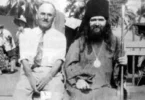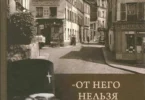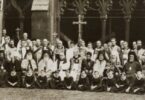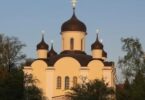The abdriged translation of this paper, which will be presented at the conference in November 2021 in Belgrade, has been posted here to enable conference participants to submit questions to the speaker beforehand. The translation has been financed by the Fund to Assistance to the Russian Church Abroad.
The attitude of the leadership of the Russian Orthodox Church Outside of Russia (ROCOR) towards lay organizations has not yet been the subject of special study. The problem is of particular interest when one considers the fact that the Russian Church Abroad did not entertain any relations with such organizations, whereas in other Russian diaspora church bodies – the North American Metropolis and the Archdiocese of Western Europe – ‘white’ clergy and laity were even allowed to decide on administrative matters.
In the Russian Church Abroad, lay participation in Church governance was initially tacitly accepted. Archpriests V. Vostokov and P. Krakhmalev, as well as the laymen P. N. Apraksin and N. S. Batiushin, were elected to Church Council at the 1921 Karlovtsy Council.[1]Deianiia Russkogo Vsezarubezhnogo Sobora, sostoiavshegosia 8–21 noiabria 1921 goda (21 noiabria–3 dekabria) v Sremskikh Karlovtsakh v Korolevstve S.Kh. i. S. Sremski Karlovtsi [Acts of the … Continue reading
However, the first conflicts had already begun. The same Council adopted an encyclical with a monarchist tone titled “To the Members of the Russian Church, in the Diaspora and in Exile,” and, what is more, this resolution passed owing to the votes of lay politicians. Relations with the laity deteriorated further in 1922, when Patriarch Tikhon, under pressure from the GPU, was coerced into shutting down the administration of the Church Abroad. The socio-political organizations of the Russian diaspora made rather harsh statements during those months, which might have seriously worsened relations with the Church in Russia. In order to avert a catastrophe, the ROCOR leadership began gradually to exclude the laity from its administrative structures. In 1922, the Supreme Church Governance of the Church Abroad was abolished, and from 1923 onward, power in the Church Abroad came to be conferred upon councils of hierarchs rather than upon “broader” councils.
However, the absolute authority of the episcopate also had a downside: real power was gradually concentrated in the hands of the Synod, while the Councils turned into a mere formality. A special circle of clergy coalesced around the elderly head of the Russian Orthodox Church, Metropolitan Anastasy (Gribanovskii). Let us recall that according to the 1956 Statutes of the Russian Orthodox Church Outside of Russia, the Synod consisted of a chairman and four members, elected by the Council primarily from among the senior bishops. However, any bishop who was in New York at the time of a Synod meeting had the right to be present at the Synod in a consultative capacity, and in matters concerning his own diocese, he had a casting vote.[2]Zakonodatel’stvo Russkoi Pravoslavnoi Tserkvi Zagranitsei (1921–2007) [The Legislation of the Russian Church Abroad from 1921–2007]. Moscow: 2014. p. 473. This led to bishops who were close to New York and who were in constant contact with the Metropolitan becoming much more influential than, for example, Archbishops Tikhon (Troitskii) of San Francisco and John (Maximovich) of Western Europe, who were more senior in terms of ordination yet based further away from the center of church administration.
Archbishop Nikon (Rklitskii) of Washington and Florida, who was permanently based in New York, Archbishop Seraphim (Ivanov) of Chicago and Cleveland, and especially Protopresbyter Georgi Grabbe, the Synod Secretary, are commonly named among those who determined the policy of the ROCOR. Archbishop Vitalii (Ustinov) of Canada is also included in this group.[3]V. Sokol’skii. Moia otkrovennaia perepiska s blazhennopochivshim arkhiepiskopom Feodosiem San-Paul’skim i vseia Brazilii. [My Frank Correspondence with Archbishop Feodosii of São Paolo … Continue readingThese men regarded administering the Church via the Chancellery as most convenient and correct.
Indeed, attacks on the hierarchy in the post-war years became a frequent occurrence. In 1958, for example, a pamphlet on “Renovationism in the Russian Church Abroad” was circulated by an anonymous group of laypeople. The text included invectives against ROCOR clerics, including the late Metropolitan Seraphim (Lade) as well as Bishop Nathanael (L’vov), who retained his rank despite breaking his monastic vows. Also on the list was Archpriest George Grabbe, accused of theft and abuse during the resettlement of Russian refugees in Argentina.[4]Nun Kassia (T. A. Senina), ed. Stolp ognennyi. Mitropolit N’iu-Iorkskii i Vostochno-Amerikanskii Filaret (Voznesenskii) i Russkaia Zarubezhnaia Tserkov’ (1964–1985) [Pillar of Fire. … Continue reading
The most famous conflict of these years was the so-called “lay revolt” in the Diocese of San Francisco, the causes and ins and outs of which still remain unclear. It all began in 1961, when the San Francisco “Society of Laymen” began to lobby for the construction of a vast cathedral in San Francisco. The originator of this idea was church warden Evgenii Khrapov, who owned a building company. Certain parishioners were rather skeptical about the idea, with some considering it a waste of money, while others were unhappy about the location of the future cathedral on a municipal landfill.[5]P. Perekrestov. Vladyka Ioann — sviatitel’ Russkogo Zarubezh’ia [Vladyka John: Holy Hierarch of the Russian Diaspora]. Moscow: 2009. p. 225; Stolp ognennyi… p. 491. But this was only the beginning. Khrapov and his supporters were accused of embezzling parish money, construction was halted, and the aged Archbishop Tikhon (Troitskii) retired after being inundated with insults and slander.
The investigation was entrusted to Bishop Antonii (Sinkevich) of Los Angeles, who uncovered irregularities, but turned a significant portion of the flock against him with his rudeness.
For the most part, the parishioners requested that John (Maximovich), whom many knew from China, be appointed Bishop of San Francisco. The Archbishop, who at that time held the See in Western Europe, arrived in San Francisco on December 4, 1962, and for some time served as interim administrator of the diocese. The Archbishop reported that he had found the community in a state of “paralysis”, complicated by the fact that the parish council, which consisted of supporters of Bishop Anthony (Sinkevich), refused to open the case files to anyone. Archbishop John’s assessment was that the documents, which he had obtained with great difficulty, were in “deliberate disarray”. Archbishop John advocated for building the cathedral as soon as possible, especially as the deadline for permission to begin construction was about to expire. Archbishop John supported the creation of a “Society of Laymen”, as well.
It cannot be ruled out that the good purpose stated by the Society caused the Archbishop to overlook abuses that may have occurred. This would not have been the first time in his life that he had been wrong about people. However, the actions of his opponents were not entirely nice, either. Having failed to shut down the project, they projected their anger onto the person of Saint John, leveling the most absurd accusations against him. Although Archbishop John was well known for his anti-Soviet stance, they began accusing him of “leftist” sympathies. To assuage their fears, on April 25, 1963, the Synod ordered Archbishop John to return to Europe, but the saint’s supporters insisted that this decision be reversed. Archbishop John remained in San Francisco, provoking a new wave of slander; this time he was accused of covering up embezzlement.[6]Perekrestov, op. cit., pp. 226–227. The Synod, long accustomed to not paying heed to the “grassroots”, perceived the “Society of Laymen” as a church-revolutionary organization. The situation was aggravated by the Society’s harsh pronouncements. It insisted on restricting the rights of the Synod of Bishops, advocated the election of bishops and deans by the laity, and rejected the 1956 Regulations under which the Russian Church Abroad was governed.[7]Stolp ognennyi…, pp. 220–224.
Protopresbyter George Grabbe feared that such sentiments might spread throughout the Church Abroad, especially if Archbishop John (Maximovich) were to become the head of it. He was the most realistic candidate for the post of First Hierarch, as he was the most senior bishop after Metropolitan Anastassy, whose life was now drawing to a close. Protopresbyter Grabbe, who tended to believe in conspiracy theories,[8]Protopresbyter Alexander Schmemann left behind an interesting account of a conversation with Protopresbyter George Grabbe: “We had a calm, even kind, yet startling conversation about how, … Continue reading was of the opinion that the activities of the Society of Laymen were part of a grand conspiracy against the Russian Orthodox Church. He wrote to Archbishop Savva (Raievskii) of Sydney, “We are facing an attempt by dark forces to take over the whole Church through Vladyka John, and if not to take it over, then at least to disintegrate and divide it.”[9]Stolp ognennyi…, p. 211.
In order to prevent the San Francisco Parish Council from being re-elected and Archbishop John from gaining strength, Protopresbyter Grabbe and the Synod of Bishops attempted to intervene in the voting process but encountered resistance. An attempt to send representatives of the Synod to the election was not successful. Saint John, referring to the canons, pointed out that interference by Synodal bishops in internal diocesan affairs was inadmissible and accused the ROCOR leadership of instigating a revolt against the diocesan bishop. “Thereafter,” Archbishop John later wrote, “the ‘Synod’ supported the revolt both outright and in secret.”[10]Sokol’skii, op. cit.,, p. 77. After the re-election of the Parish Council on June 9, 1963, the supporters of Archbishop Antonii (Sinkevich) found themselves in the minority.
The new parish council supported the construction of the cathedral, but Saint John’s opponents did not give up. They accused him of forgery and took the matter to court in San Francisco. Fr. George Grabbe,[11]Sokol’skii, op. cit., p. 20. and Archbishops Anthonii (Sinkevich), Vitalii (Ustinov), and Seraphim (Ivanov) all acted in harmony on the side of the plaintiffs. The latter even wrote “memoirs” in which he exposed the saint as paranoid.[12]Hieromonk Seraphim (Rose) and Hegumen Herman (Podmoshensky). Blazhennyi Ioann Chudotvorets. Predvaritel’nye svedeniia o zhizni i chudesakh arkhiepiskopa Ioanna (Maksimovicha) [Russian edition … Continue reading Archbishop John was reminded of the fact that he had attended services with Patriarch Alexis I while in China from 1945–1946.[13]Stolp ognennyi…, pp. 215–216. Protopresbyter George Grabbe did not lay off, resorting to deception, among other things. According to the testimony of Saint John and others, telegrams in support of the plaintiffs signed by Metropolitan Anastasy were sent to the court. It later turned out that the Metropolitan had not sent the telegrams. The situation in the Diocese of San Francisco was tense. Saint John’s opponents, who considered to be giving protection to the fraudsters, did not shy from openly insulting him or even spitting in his face in public.[14]Rose & Podmoshensky, op. cit., p. 345.
The San Francisco Court considered the case on July 27. Archbishop John was given the option to await the verdict in an adjacent room, but the saint took his seat in the courtroom next to his supporters, Bishops Nektarii (Kontsevich) and Savva (Sarachevich). The latter was a lawyer by training and has been assisting Archbishop John.
Saint John understood that the atmosphere was still very difficult and demanded that a Council of Bishops be convoked. “The authority of the Synod,” Archbishop John wrote on July 23, 1963, “has been almost fully undermined. […] It is no longer revered by its former faithful, who had remained faithful to the Church Abroad in the fire of adversity yet now feel themselves to be its stepchildren. What is happening in San Francisco is spreading rapidly throughout the whole Diaspora, and is threatening the very existence of the entire Church Abroad, as some of its members are falling away from the faith altogether. Metropolitan Anastasy’s name, until recently renowned and respected, has been covered in disgrace, for his controversial decrees, court decisions, and other actions have diminished his prestige not only among our flock, but also among those of other faiths, for they were made in his name. It is painful to observe the disintegration of the Church Abroad, which only benefits Her enemies. We, Her bishops, cannot allow this, nor can we allow one organized group to dominate the rest of the episcopate.”[15]Sokol’skii, op. cit., pp. 77–78.
On July 27, the San Francisco City Court declared itself incompetent in ecclesiastical matters and handed to the Office of the Controller. The latter found no irregularities on the part of the Archbishop and the parish council. Shortly thereafter after, on August 14, 1963, St. John was officially confirmed by the Synod as Bishop of San Francisco.
The situation in the ROCOR remained grave even under the next First Hierarch, Metropolitan Philaret (Voznesenskii). Extremes similar to those in San Francisco engulfed many dioceses of the Russian Church Abroad at the time. The mid-1960s and early 1970s were a period of constant conflict, either simmering or outright. Civil lawsuits became commonplace and were reported in the press. In South America, for example, 81-year-old Bishop Agapit (Kryzhanovskii) of Goiânia battled with the Parish Council of his cathedral and then filed suit against eight parishioners who accused him of violating his monastic vows. The court acquitted the bishop, while his opponents faced serious penalties up to a prison sentence in the event that they lost the case.[16]Sokol’skii, op. cit., pp. 18–19. Although they were able to avoid prison time, the trial received widespread publicity and did not increase respect for the church.[17]Protopresbyter G. Grabbe. Leter to Metropolitan Philaret Voznesenskii dated 31.12.1964. p. 2. Stanford University Library. Special Collections. George Grabbe Pappers. Box 1. Folder 4.
Another scandal arose around the American “Down with Evil” brotherhood. Its members were accused by the Synod of defamation of the hierarchy, banned from receiving Holy Communion in 1968, and fully excommunicated in 1969.[18]“Opredeleniia Arkhiereiskogo Sinoda Russkoi Pravoslavnoi Tserkvi Zagranitsei” [“Resolutions of the Synod of Bishops of the Russian Orthodox Church Abroad”], in: Tserkovnaia zhizn’ … Continue reading In the Eastern US, there was a “Conference of Churchmen” that issued appeals against the “dictatorship of bishops” and demanded additional rights for the laity.[19]“Opredeleniia Sobora Episkopov Russkoi Pravoslavnoi Tserkvi Zagranitsei” [“Resolutions of the ROCOR Synod of Bishops”], in: Pravoslavnaia Rus’ 12/1967. p. 7. Similar demands were made by the anonymous “Conference of Churchmen” in Sea Cliff, which issued its own memorandum. This document was also supported by the “Society of Laymen” in San Francisco.[20]“Arkhiereiskii Sobor” [“Council of Bishops”], in: Nasha strana 904/13.06.1967. p. 1.
Metropolitan Philaret, an opponent of Church democracy, criticized it on several occasions. At the Council of Bishops in 1967, he said that there was no precedent in Scripture for lay participation in apostolic Councils and that lay people could only have a consultative but by no means a deciding voice. He called the San Francisco rebels an “anti-church society” and called their claims heresy. According to Metropolitan Philaret, the word “schism” was already looming on the horizon. “Sheep, do not shepherd the shepherds,” the Metropolitan said, quoting Saint Gregory the Theologian, “and do not surpass your bounds; do not judge the judges and do not prescribe laws to the lawmakers”.[21]“Sobor episkopov”, in: Nasha strana 902/30.05.1967. p. 3. Admitting that bishops are not always right, the Metropolitan said that this does not diminish their authority: “Our sins are with us, yet our grace is with you”.[22]Arkhiereiskii Sobor, in: Nasha strana 904/13.06.1967. p. 1.
The problem was so serious that the 1967 Council of Bishops adopted a resolution against laymen who were “seeking to restrict the Divinely established authority of the episcopate”. It was resolved that laypeople could only assist the bishops but in no way claim power.[23]Resolutions of the ROCOR Council of Bishops, in: Pravoslavnaia Rus’ 12/1967. pp. 7–8.
Such problems also got in the way of the planned Third All-Diaspora Council. The decision to convene it was taken at an extended session of the Synod of Bishops on March 21, 1969. It was scheduled for spring of 1971, but subsequently postponed until September. A Pre-Conciliar Commission was also formed, with Archbishop Nikon (Rklitskii) as Chairman.[24]“K sozyvu III-go Vsezarubezhnogo Sobora s uchastiem klira i mirian RPTsZ” [“On the Convening of the Third All-Diaspora Council of ROCOR Clergy and Laity”], in: Tserkovnaia zhizn’ … Continue reading
However, local conflicts were not conducive to realizing this plan. The hopes of grassroots elements in the Church were revived that a great Council would bring an end to the domination of the Grabbe Chancellery. This thought was expressed, for example, by Archpriest Seraphim Slobodskoi. He pointed out that there was much to talk about at the Council – about the San Francisco affair, about material support for Fr. George Grabbe from the American secret services, and finally, about Grabbe’s celebrating the wedding of the pretender Golenevskii. Naturally, this was all displeasing to the Synod of Bishops. It got to the point where some bishops began to see lay organizations as an opposing force that was revolutionary and harmful to them.
Considerable controversy also erupted at the Council of Bishops in September 1971. Those opposed to the large Council insisted that the situation in the Russian Orthodox Church was too explosive. “At this moment,” said Bishop Konstantin (Esenskii) of Brisbane, “when we are in a tense struggle with foreign elements, a Council with clerics and laity will lead us into turmoil”. Bishop Konstantin was supported in this regard by Archbishop Vitalii (Ustinov), who indicated that there were no fundamental issues for the Church to decide upon, and that a joint meeting with the laity would not be beneficial, but could easily destroy the fragile peace.
Although by 1974 passions had indeed died down, fears of an unpleasant surprise from the laity were strong. It was no accident that Archbishop Averkii, in an article published on the eve of the Council, twice reiterated that there could be no democracy in the Church and that clergy and lay participation was only necessary to strengthen oneness of mind and unanimity.[25]Archbishop Averkii Taushev. “Tretii Vsezarubezhnyi Sobor” [“The Third All-Diaspora Council”], in: Pravoslavnaia Rus’ 16/1974. pp. 3–4. These worries were in vain and the Third All-Diaspora Council did not lead to any turmoil.
As we can see, the relationship between the ROCOR leadership and lay organizations is not unambiguous. The Synod was not always on top, and the laity was not always right. But why was the conflict so serious? Let us try to answer this question briefly here.
Patriotic sentiments in the Russian Church Abroad were noticeably stronger than in the Western European Archdiocese and the Metropolis of North America; not only that, but they became almost part of the ideology for the ROCOR. The political dimension was often brought to the fore, sometimes in a way that clashed with the interests of the Church. Hence, there was a divergent understanding of what was good for the Church and what was good for Russia. One can assume that this difference of opinion was at the heart of the conflict between the laity and the hierarchy. It is thought that in the conditions of that time, there would have been more harm than good from social organizations. It is quite possible that instead of the triumph of justice which such organizations were calling for, we would have seen new turmoil that would have benefitted the opponents of the Russian Church Abroad.
References
| ↵1 | Deianiia Russkogo Vsezarubezhnogo Sobora, sostoiavshegosia 8–21 noiabria 1921 goda (21 noiabria–3 dekabria) v Sremskikh Karlovtsakh v Korolevstve S.Kh. i. S. Sremski Karlovtsi [Acts of the All-Diaspora Council of November 8–21, 1921, in Sremtsy Karlovtsy in the Kingdom of Serbs, Croats, and Slovenes]. 1922. p. 58. |
|---|---|
| ↵2 | Zakonodatel’stvo Russkoi Pravoslavnoi Tserkvi Zagranitsei (1921–2007) [The Legislation of the Russian Church Abroad from 1921–2007]. Moscow: 2014. p. 473. |
| ↵3 | V. Sokol’skii. Moia otkrovennaia perepiska s blazhennopochivshim arkhiepiskopom Feodosiem San-Paul’skim i vseia Brazilii. [My Frank Correspondence with Archbishop Feodosii of São Paolo and All Brazil, of Blessed Repose.] New York: 1970. p. 19. |
| ↵4 | Nun Kassia (T. A. Senina), ed. Stolp ognennyi. Mitropolit N’iu-Iorkskii i Vostochno-Amerikanskii Filaret (Voznesenskii) i Russkaia Zarubezhnaia Tserkov’ (1964–1985) [Pillar of Fire. Metropolitan Philaret of New York and Eastern America and the ROCOR, 1964–1985]. Saint Petersburg: 2007. pp. 205–208. |
| ↵5 | P. Perekrestov. Vladyka Ioann — sviatitel’ Russkogo Zarubezh’ia [Vladyka John: Holy Hierarch of the Russian Diaspora]. Moscow: 2009. p. 225; Stolp ognennyi… p. 491. |
| ↵6 | Perekrestov, op. cit., pp. 226–227. |
| ↵7 | Stolp ognennyi…, pp. 220–224. |
| ↵8 | Protopresbyter Alexander Schmemann left behind an interesting account of a conversation with Protopresbyter George Grabbe: “We had a calm, even kind, yet startling conversation about how, somewhere, in a cellar in Jerusalem, a Messiah was being brought up who was to be the Antichrist… and about some ‘signs’ or others. And some sort of ‘insurance’. This is the kind of localization of evil, of ‘dark’ forces, the kind of belief in some kind of ‘esoteric’ history, with its complete lack of comprehension of history itself, that always astonishes me.” (Protopresbyter A. Schmemann. Dnevniki [Diaries], 1973–1983. 5ed. Moscow: 2017. p. 453–454). |
| ↵9 | Stolp ognennyi…, p. 211. |
| ↵10 | Sokol’skii, op. cit.,, p. 77. |
| ↵11 | Sokol’skii, op. cit., p. 20. |
| ↵12 | Hieromonk Seraphim (Rose) and Hegumen Herman (Podmoshensky). Blazhennyi Ioann Chudotvorets. Predvaritel’nye svedeniia o zhizni i chudesakh arkhiepiskopa Ioanna (Maksimovicha) [Russian edition of: Blessed John the Wonderworker: A Preliminary Account of the Life and Miracles of Archbishop John Maximovitch]. Moscow: 1993. p. 345. |
| ↵13 | Stolp ognennyi…, pp. 215–216. |
| ↵14 | Rose & Podmoshensky, op. cit., p. 345. |
| ↵15 | Sokol’skii, op. cit., pp. 77–78. |
| ↵16 | Sokol’skii, op. cit., pp. 18–19. |
| ↵17 | Protopresbyter G. Grabbe. Leter to Metropolitan Philaret Voznesenskii dated 31.12.1964. p. 2. Stanford University Library. Special Collections. George Grabbe Pappers. Box 1. Folder 4. |
| ↵18 | “Opredeleniia Arkhiereiskogo Sinoda Russkoi Pravoslavnoi Tserkvi Zagranitsei” [“Resolutions of the Synod of Bishops of the Russian Orthodox Church Abroad”], in: Tserkovnaia zhizn’ [Church Life] 1968–1969. pp. 3–4, 31–32. |
| ↵19 | “Opredeleniia Sobora Episkopov Russkoi Pravoslavnoi Tserkvi Zagranitsei” [“Resolutions of the ROCOR Synod of Bishops”], in: Pravoslavnaia Rus’ 12/1967. p. 7. |
| ↵20 | “Arkhiereiskii Sobor” [“Council of Bishops”], in: Nasha strana 904/13.06.1967. p. 1. |
| ↵21 | “Sobor episkopov”, in: Nasha strana 902/30.05.1967. p. 3. |
| ↵22 | Arkhiereiskii Sobor, in: Nasha strana 904/13.06.1967. p. 1. |
| ↵23 | Resolutions of the ROCOR Council of Bishops, in: Pravoslavnaia Rus’ 12/1967. pp. 7–8. |
| ↵24 | “K sozyvu III-go Vsezarubezhnogo Sobora s uchastiem klira i mirian RPTsZ” [“On the Convening of the Third All-Diaspora Council of ROCOR Clergy and Laity”], in: Tserkovnaia zhizn’ 1968–1969. p. 61. |
| ↵25 | Archbishop Averkii Taushev. “Tretii Vsezarubezhnyi Sobor” [“The Third All-Diaspora Council”], in: Pravoslavnaia Rus’ 16/1974. pp. 3–4. |











The Church is not a democracy. The teachings of the Church are based on the in- depth meanings of each of the Ten Commandments.
True, the Church is not a democracy, but it is conciliar [sobornaya], and this implies certain democratic principles in its functioning. The extent to which these principles are exercised depends on discernment and guidance by the Holy Spirit. This has nothing to do with the Ten Commandments.
да вы правы,в отличии от автора статьи
True, the Church is not a democracy, but it is conciliar [sobornaya], and this implies certain democratic principles in its functioning. The extent to which these principles are exercised depends on discernment and guidance by the Holy Spirit. This has nothing to do with the Ten Commandments.